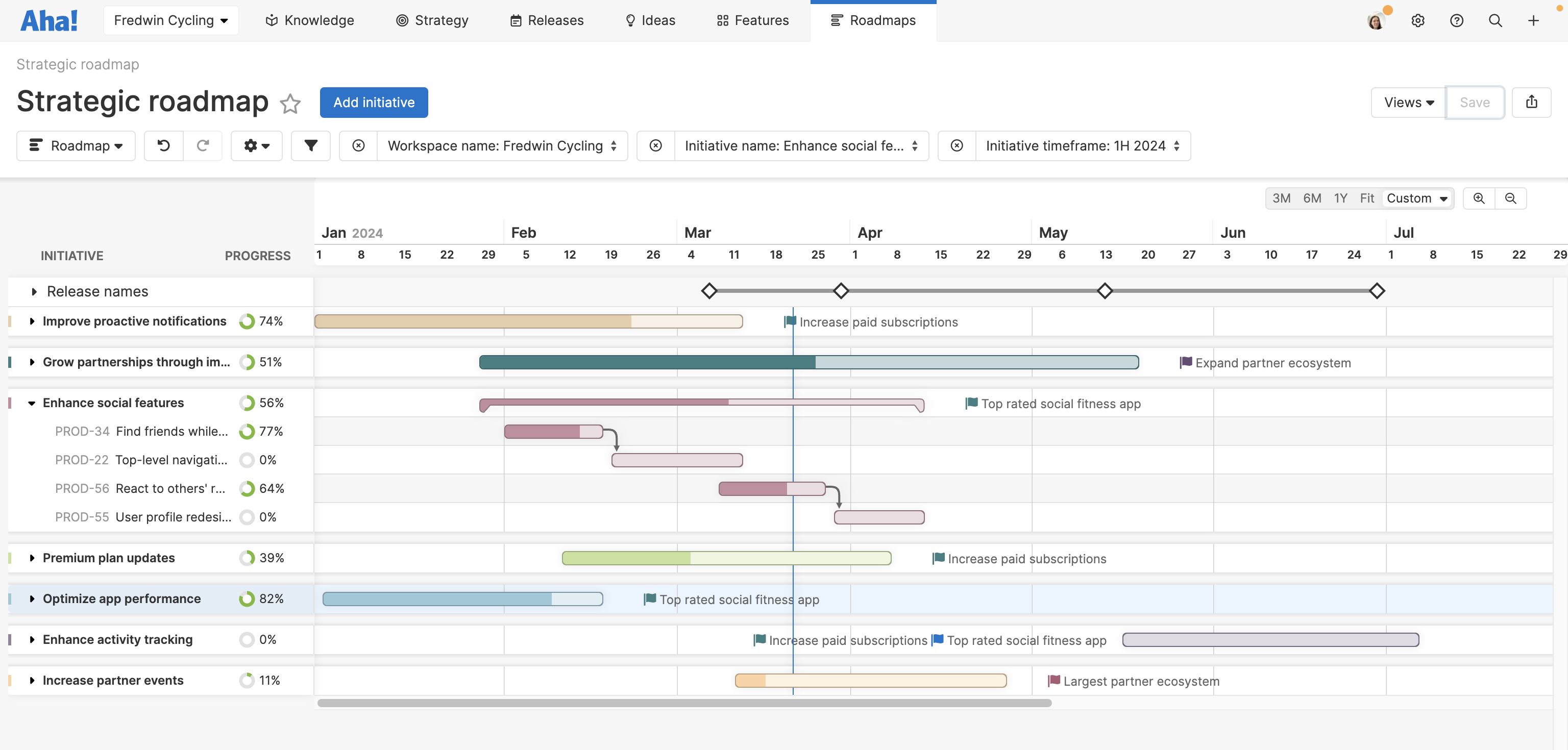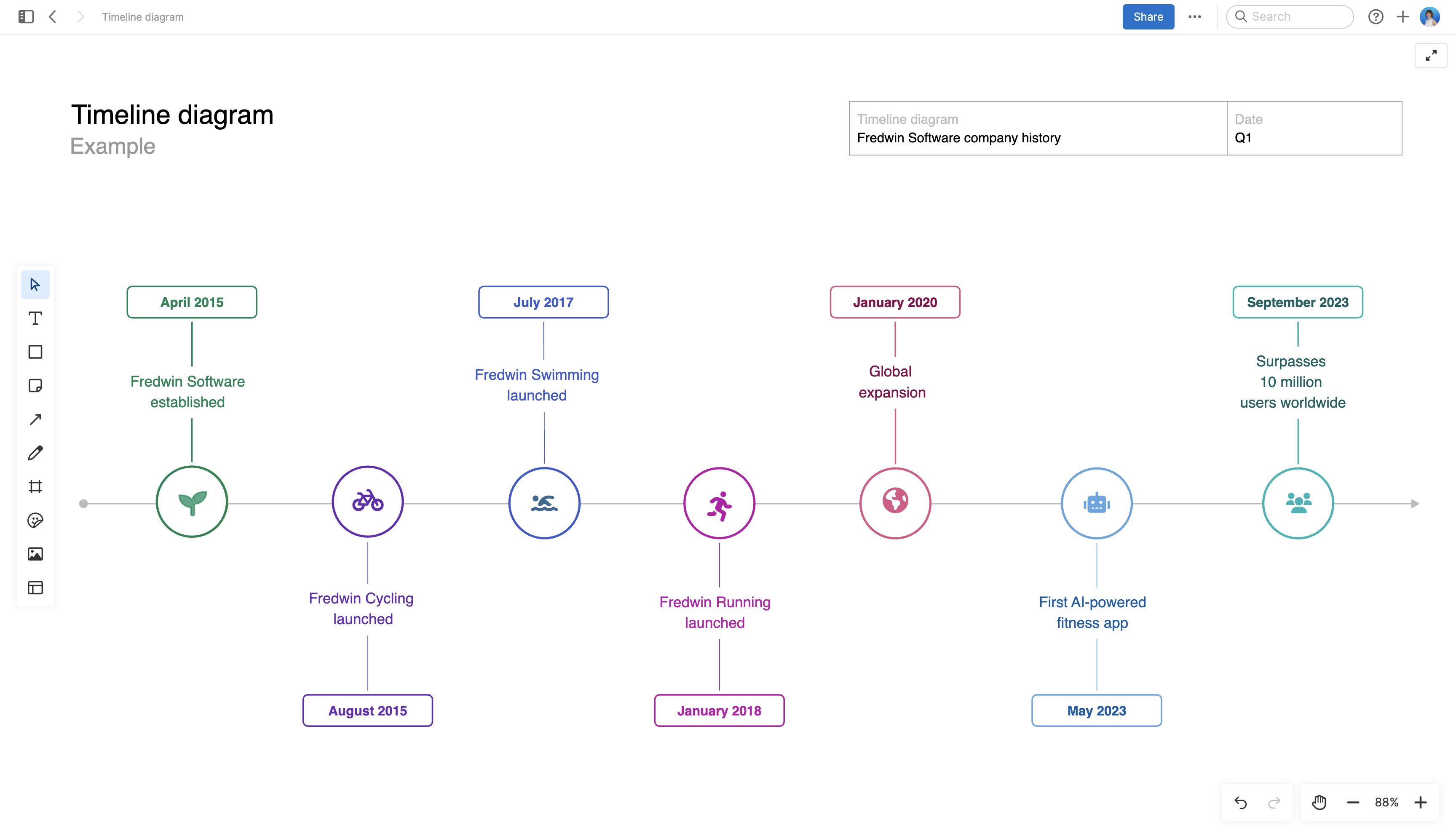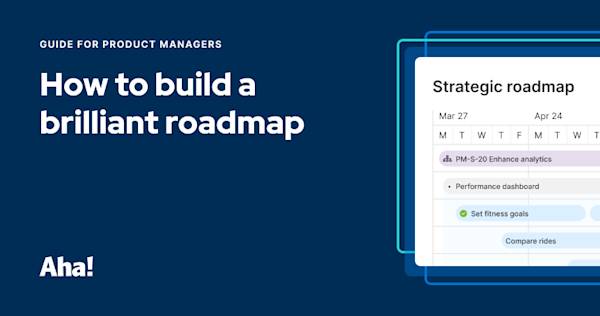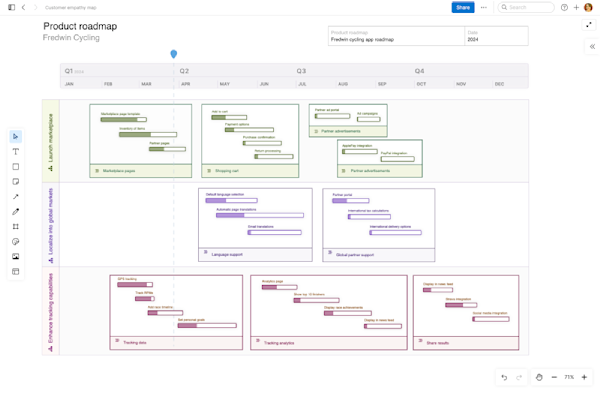Types of roadmap milestones
Depending on your plans and audience, there are a few different types of milestones you might choose to include on your roadmap. Below is a list of popular types:
Achievements: Representing something you must complete or accomplish to meet your product goals — such as finishing a certain number of customer interviews or generating a number of conversions or trials.
Approvals: Anything that requires executive or leadership buy-in. Examples could be getting leadership to sign off on a budget, design, or direction.
Deadlines: Due dates for important deliverables or dependencies. This could include features ready for a beta release or a marketing site launch.
Events: Planned in-person or virtual occasions. Common examples are industry conferences, quarterly business reviews, and webinars.
Meetings: Key meetings, such as a project kick-off, cross-functional launch meeting, or quarterly program planning.
Related:
Top
How to identify roadmap milestones
Every detail of your plan matters — but not everything is a milestone. Think about identifying milestones in the context of the types of plans you are creating and who you are presenting your roadmap to. For example, the teams working together on a specific project would need to be aware of cross-functional meetings and reviews. However, if you are presenting your strategic roadmap to the board of directors, your milestones would be higher-level markers of success — such as acquiring a certain number of new customers.
The overall timeline is an important consideration too. A business roadmap that shows three to five years out might have half-year or annual milestones, but not monthly milestones.
For product and development teams, major releases would be an obvious choice for milestones — as they are the anchors for achieving product goals and initiatives. But if you are creating more detailed plans, your milestones can be more granular.
Here is a set of questions that can help you determine which milestones to choose:
Does product or project success (or a phase therein) depend on completion of this benchmark, event, or type of work?
Will achieving it measurably impact goals?
Does it matter to customers, the business, and the broader team?
If you answer yes to one or more of the above, it is a good sign that you have a milestone. Keep in mind that it is best practice to include fewer rather than more milestones — so folks can visually absorb your roadmap view and stay focused on the milestones that matter most.
Top
Viewing milestones on a roadmap
Milestones are a core component on your roadmap — along with goals, initiatives, phases, release time frames, and feature dates. But visually, milestones appear differently because they are a zero-duration indicator. The other components on your roadmap will typically be represented by bars, while milestones will be represented by dots or points in time.
Let's look at milestones on a few different roadmaps created in Aha! Roadmaps:
Strategy roadmap milestones
A strategy roadmap displays a high-level timeline of the work required to achieve business or product initiatives. In the roadmap below, the release dates related to each initiative map to the milestones displayed at the top (gray diamonds).

This is a strategic roadmap created in Aha! Roadmaps. You can expand or collapse the release milestones section, depending on how much detail your audience needs.
Portfolio roadmap milestones
A portfolio roadmap showcases plans across multiple project, programs, or products. In the view below, the milestones across the portfolio are visible at the top — with colors to match the initiatives they relate to.

This is a portfolio roadmap created in Aha! Roadmaps.
Project roadmap milestones
The Gantt chart below shows phases of a launch plan. Dots represent the milestones — in this case, the launch kickoff and the go-live date. If there are certain milestones that you will repeat across projects, it can be helpful to create a consistent template that you can reuse.

This is a Gantt chart-style roadmap created in Aha! Roadmaps.
If you want to visualize your own milestones on a roadmap, choose from among these 16 downloadable roadmap templates that we have created. Templates are a great starting point for small teams. As your plans grow, consider upgrading to purpose-built software like Aha! Roadmaps. You can choose from a library of roadmap views or create your own custom roadmap.
Related:






